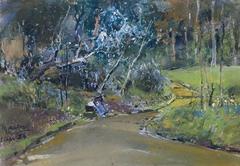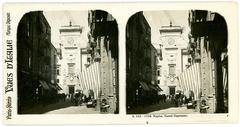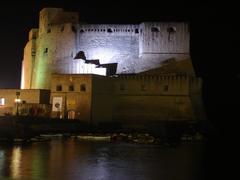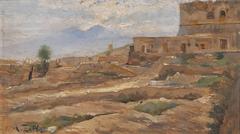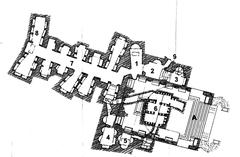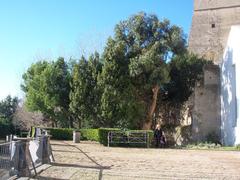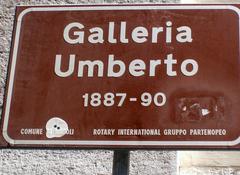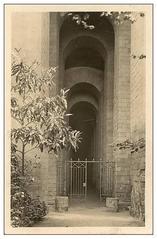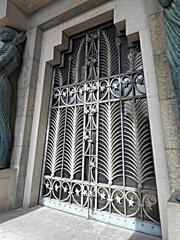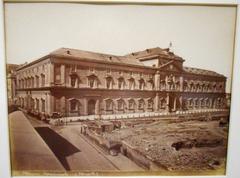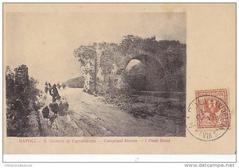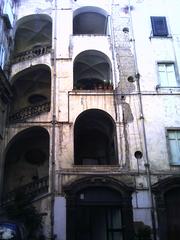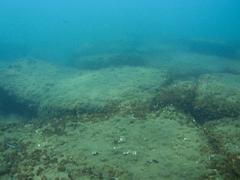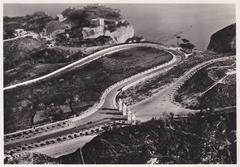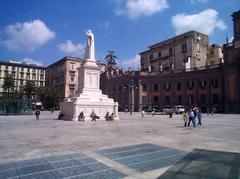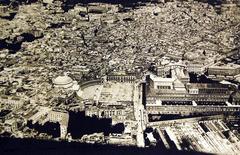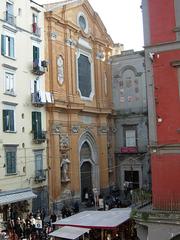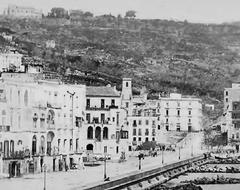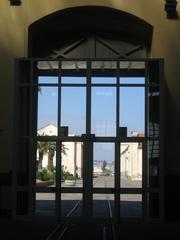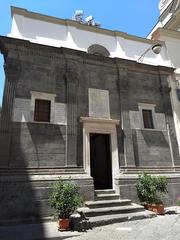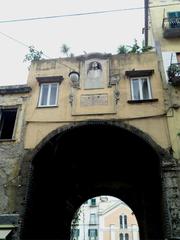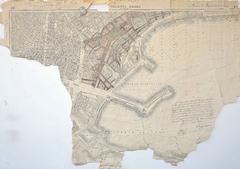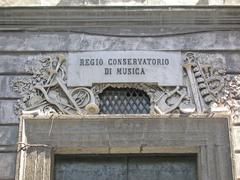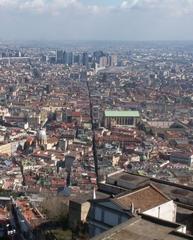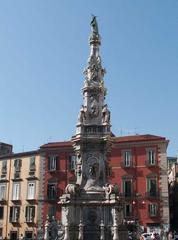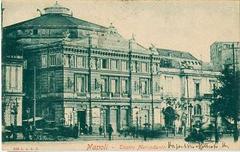
Via Dei Tribunali, Naples: Visiting Hours, Tickets, and Historical Sites Guide
Date: 03/07/2025
Introduction
Via dei Tribunali is one of Naples’ most renowned and atmospheric streets, serving as both a living museum of Neapolitan history and a vibrant hub of local culture and gastronomy. As the ancient Decumanus Maximus of Neapolis, its story stretches from the Greek and Roman periods through the Renaissance and into modern times. Visitors are invited to explore its rich tapestry of architectural marvels, sacred sites, and world-famous pizzerias—making it an essential destination for anyone seeking to immerse themselves in the heart of Naples.
Table of Contents
- Historical Overview
- Architectural and Religious Landmarks
- Visiting Information
- Travel Tips
- Archaeology and the Underground City
- Legends and Folklore
- Gastronomy: The Ritual of Pizza
- Cultural Crossroads and Contemporary Life
- Festivals and Public Gatherings
- Nearby Attractions
- Practical Visitor Information
- Frequently Asked Questions (FAQ)
- Conclusion
- References
Historical Overview
Ancient Origins and Urban Evolution
Via dei Tribunali traces its origins to the 5th century BCE as the Decumanus Maximus—the principal east-west axis of ancient Neapolis in the classic Greek city plan. The street was central to both commercial and civic life, connecting the city’s western and eastern gates (now Port’Alba and Castel Capuano, respectively). In Roman times, it remained a critical thoroughfare, intersecting with the Cardo Maximus at the site of today’s Piazza San Gaetano—the civic and religious heart of the city. Subterranean excavations beneath San Lorenzo Maggiore and the surrounding area reveal remnants of the Greek agora and Roman forum, underscoring the area’s enduring significance (Comune di Napoli; The Gannet).
The Renaissance and the Name “Via dei Tribunali”
In the 16th century, Spanish Viceroy Don Pedro of Toledo transformed Castel Capuano into Naples’ central courthouse, consolidating the city’s major courts and lending the street its current name—“Via dei Tribunali” (Street of the Courts). This shift marked the area as Naples’ judicial heart, a role that shaped its identity for generations (napolisotterranea.org). The street also became a prestigious address for aristocratic families, religious institutions, and civic buildings, many of which still stand today.
Architectural and Religious Landmarks
Via dei Tribunali is home to a wealth of historic sites:
- San Paolo Maggiore Basilica: Built over the ancient Greek agora and Roman temple, featuring Baroque interiors and Roman columns (Comune di Napoli).
- San Lorenzo Maggiore Basilica and Archaeological Site: A rare French Gothic church with access to the ruins of the Roman macellum beneath (The Gannet).
- Girolamini Complex: Housing Naples’ oldest library and a rich art collection (Comune di Napoli).
- Naples Cathedral (Duomo di Napoli): Renowned for the Chapel of San Gennaro and the Baptistery, a short walk from Via dei Tribunali (Evendo).
- Castel Capuano: The eastern anchor of the street, originally a 12th-century fortress and later the city’s courthouse (Idealista).
- Pio Monte della Misericordia: Home to Caravaggio’s “The Seven Works of Mercy” and a symbol of Neapolitan charitable culture (napolisotterranea.org).
- Purgatorio ad Arco: Notable for its evocative funerary art and skull imagery.
Visiting Information
Visiting Hours
- Via dei Tribunali: Open 24/7 as a public street.
- San Lorenzo Maggiore: Tuesday–Sunday, 9:30 AM–7:00 PM; last admission 30 minutes before closing.
- Girolamini Complex: Monday–Saturday, mornings and afternoons; check official sources for updates.
- Naples Cathedral (Duomo): Open daily; check for variations during religious services.
- Castel Capuano: Guided tours on select days, usually 10:00 AM–4:00 PM.
- Pio Monte della Misericordia: Tuesday–Sunday, 9:30 AM–6:00 PM.
Tickets and Entrance Fees
- Walking Via dei Tribunali: Free.
- San Lorenzo Maggiore Archaeological Site: Approx. €6; discounts for EU citizens under 25.
- Naples Underground (Napoli Sotterranea): Guided tours €10–€15; advance booking recommended.
- Castel Capuano: Guided tours €6–€8.
- Pio Monte della Misericordia: €6; discounts available, free entry on the first Sunday of the month.
Accessibility
The street is mostly pedestrian-friendly, but cobblestone paving may be uneven. Many major churches and museums offer ramps or assistance, but some historic buildings have limited accessibility. Wheelchair access is available at many eateries and attractions, though it’s advisable to check in advance.
Travel Tips
- Getting There: Easily reached via Naples Metro Line 1 (“Dante” or “Toledo” stops), as well as multiple bus routes.
- Best Times to Visit: Early mornings or late afternoons to avoid crowds and enjoy milder weather.
- Payment: Many traditional pizzerias and shops are cash-only; bring euros.
- Local Etiquette: Friendly attitude and a few Italian phrases go a long way.
Archaeology and the Underground City
Explore the hidden depths of Naples beneath Via dei Tribunali. The Naples Underground tour (Napoli Sotterranea), accessible from Piazza San Gaetano and San Lorenzo Maggiore, reveals a labyrinth of ancient Greek and Roman tunnels, cisterns, and aqueducts. Guided tours are available daily and provide a unique view of the city’s ancient infrastructure (The Gannet).
Legends and Folklore
Via dei Tribunali is steeped in local legends. The Palazzo Spinelli di Laurino, for example, is said to be haunted by the ghost “Bianca,” adding to the street’s mysterious allure (Napoli Sotterranea).
Gastronomy: The Ritual of Pizza
Via dei Tribunali is globally renowned as Naples’ “pizza alley,” boasting some of the city’s most celebrated pizzerias:
- Pizzeria Sorbillo: Famous for classic Margherita and Marinara pizzas (The Foodellers).
- Di Matteo: Known for pizza, fried pizza (pizza fritta), and street food classics like arancini.
- Dal Presidente: Gained fame after a visit from U.S. President Bill Clinton.
- Casa Capasso and Pizzeria Imperatore: Celebrate creative pizza variations and street food.
Other street food highlights include cuoppo (cones of fried treats), frittatine di pasta, arancini, and sweet pastries like sfogliatella and babà (Italy Best; Untold Italy).
Cultural Crossroads and Contemporary Life
As part of Naples’ UNESCO World Heritage Site, Via dei Tribunali blends ancient, medieval, and modern elements. The street is also a center for contemporary cultural events, local festivals, and artistic initiatives, balancing tourism with the preservation of authentic Neapolitan traditions.
Festivals and Public Gatherings
Via dei Tribunali is central to major Neapolitan festivals, including the Feast of San Gennaro, Carnival, and Easter processions. These events blend sacred rituals with vibrant street celebrations, drawing locals and visitors alike.
Nearby Attractions
- Via San Gregorio Armeno: World-famous for handcrafted nativity scenes (presepi).
- Spaccanapoli: Another historic east-west street, parallel to Via dei Tribunali.
- Via Toledo and the Spanish Quarter: Bustling shopping and local life.
- Piazza Bellini: Renowned for nightlife and open-air cafes.
Practical Visitor Information
- Best Times to Visit: Spring and early autumn for pleasant weather and moderate crowds. Evenings are lively, especially for dining.
- Family and Budget Friendliness: Many free or affordable attractions; street food is great for families and travelers on a budget.
- Guided Tours: Historical and culinary tours are widely available and recommended for in-depth exploration (GPSmyCity).
Frequently Asked Questions (FAQ)
Q: Is there an entrance fee to walk Via dei Tribunali?
A: No, it’s a public street. Some museums, churches, and underground tours require tickets.
Q: What are the visiting hours for main attractions?
A: Generally, 9:00 AM–1:00 PM and 4:00 PM–7:00 PM, but check individual sites for exact times.
Q: Is the street accessible for people with disabilities?
A: The street is pedestrian-friendly but features uneven cobblestone; major sites may offer accessibility aids, but some buildings are limited.
Q: Which pizzerias are must-try?
A: Sorbillo, Di Matteo, Dal Presidente, Casa Capasso, and Pizzeria Imperatore are all highly recommended.
Q: How can I get there?
A: Metro Line 1 (Dante or Toledo stops) and multiple bus lines serve the area.
Q: Are guided tours available?
A: Yes, including historical, underground, and food tours.
Conclusion
Via dei Tribunali is the beating heart of Naples, seamlessly blending layers of history, spiritual heritage, vibrant street life, and culinary excellence. From ancient ruins and majestic churches to bustling pizzerias and artisan shops, this iconic street offers an authentic window into the Neapolitan soul. For the best experience, plan your visit with up-to-date information on opening hours and tickets, consider a guided tour, and don’t miss the opportunity to savor the legendary pizza and street foods that have put Naples on the global gastronomic map.
For more travel tips, download the Audiala app, explore our related guides on Naples’ historic sites and cuisine, and follow us on social media for the latest updates and event news.
References Including Official Websites and Reliable Sources
- This is a sample text. (Comune di Napoli)
- This is a sample text. (napolisotterranea.org)
- This is a sample text. (Introducing Naples)
- This is a sample text. (The Foodellers)
- This is a sample text. (The Gannet)
- This is a sample text. (Evendo)

